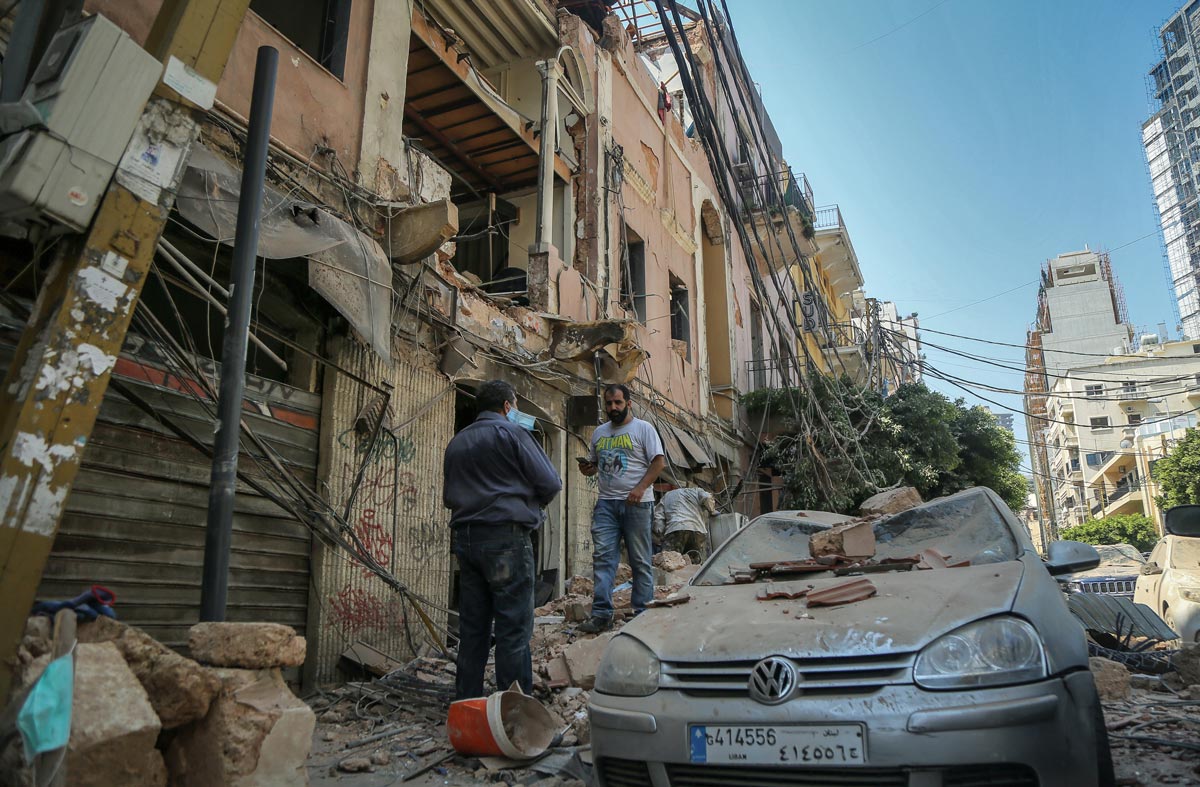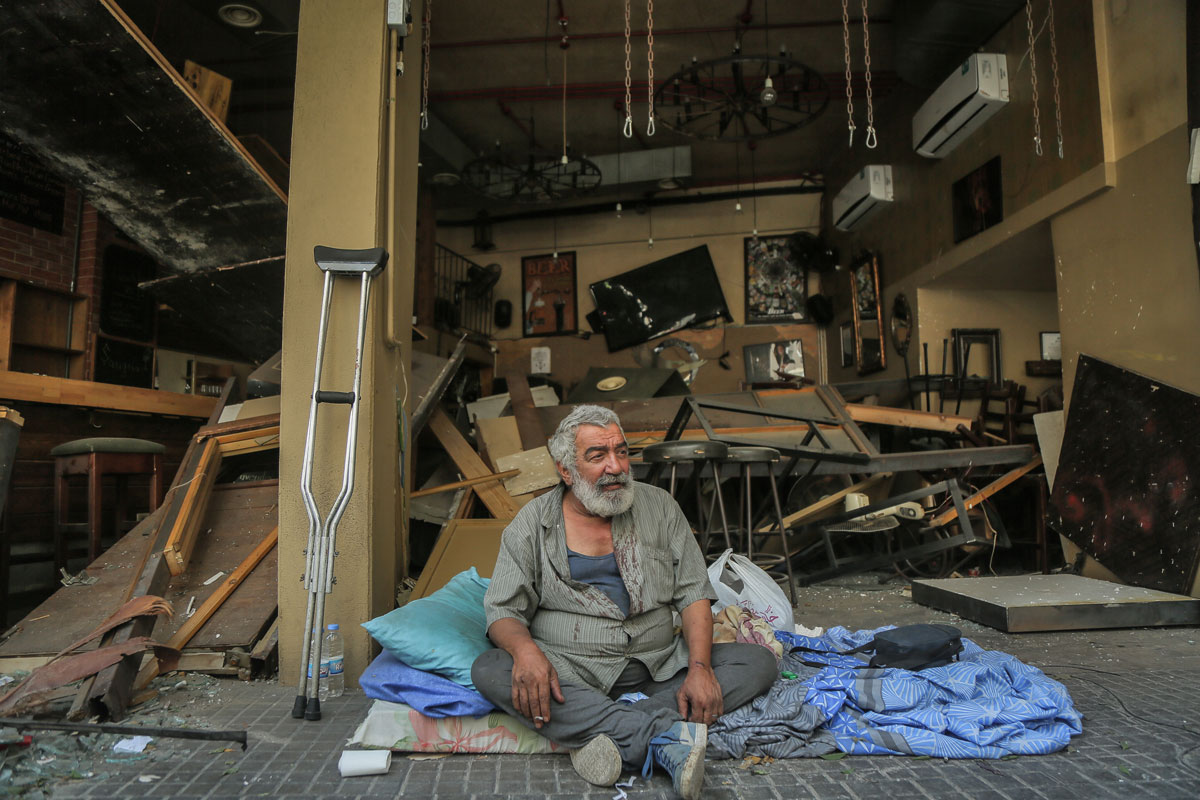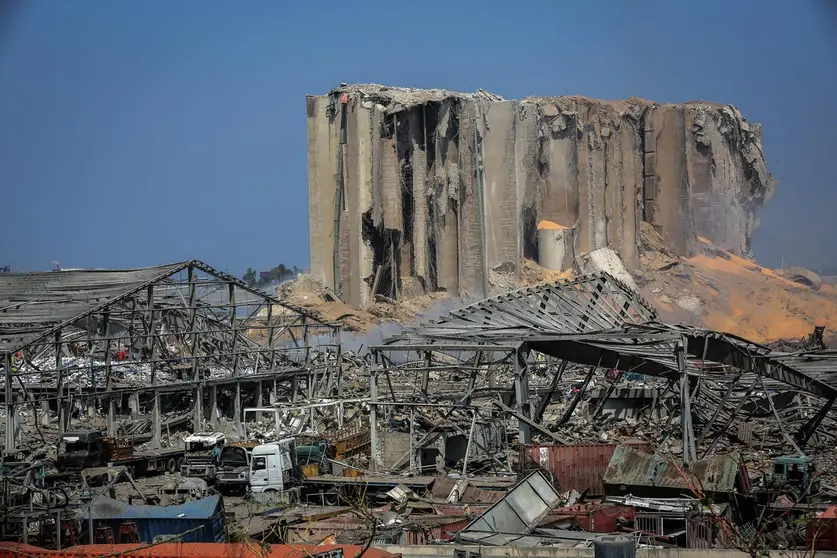A massive explosion at the port of Beirut killed more than 100 people and injured thousands. On the day after the catastrophe, many questions still remain unanswered. Here is what we know, and what we don't know, so far:

People inspect destruction outside a damaged building. Photo: Marwan Naamani/dpa.
What we know:
- The place: The explosion happened in an industrial area at the northern port of the Lebanese capital, where the largest damage was sustained at warehouses and corn silos. Nearby lie the central Martyr's square and Beirut's popular nightlife area.
- The explosion: The detonation happened several minutes after 18:00 and was followed by a shock wave that rapidly spread in a circle from the epicentre at the port, with a mushroom cloud appearing in the sky above the coastal city.
- Its power: The effects of the explosion and its shock wave were felt as far away as Cyprus. Many people there and in Beirut believed an earthquake was happening at first. Lebanese seismologists said the blast was equivalent to a 4.3-magnitude earthquake.
- The victims: At least 100 people died and more than 4,000 were injured, many by flying shards of glass from shattering windows. The number of casualties is expected to rise as rescue teams search the rubble.
- The damage: Due to the power of the explosion, walls and roofs collapsed, roads in the city centre were covered in debris and glass, vehicles and ships were damaged. A first estimate by the government says the damage amounts to 3 to 5 billion dollars.
 A man sits on the pavement in front of a destroyed bar a day after the explosion. Photo: Marwan Naamani/dpa.
A man sits on the pavement in front of a destroyed bar a day after the explosion. Photo: Marwan Naamani/dpa.
What we don't know:
- The explosive: First reports indicate that a large amount of ammonium nitrate could have caused the explosion. Around 2,750 tons of the highly dangerous substance had been stored at the port for the past six years, according to the prime minister.
- The trigger: It is possible that a smaller explosion happened at a warehouse storing fireworks, which caused a larger fire that triggered a second, much larger blast. This has not been confirmed, however, and it remains unclear whether it was an accident or a deliberately caused explosion.
- The motivation: There are at present no indications that there was a political motivation behind the explosion or that it was an attack, though this has not been totally ruled out yet. Not too far from the port area, a bombing attack in 2005 killed former Lebanese prime minister Rafik Hariri alongside 21 others.












